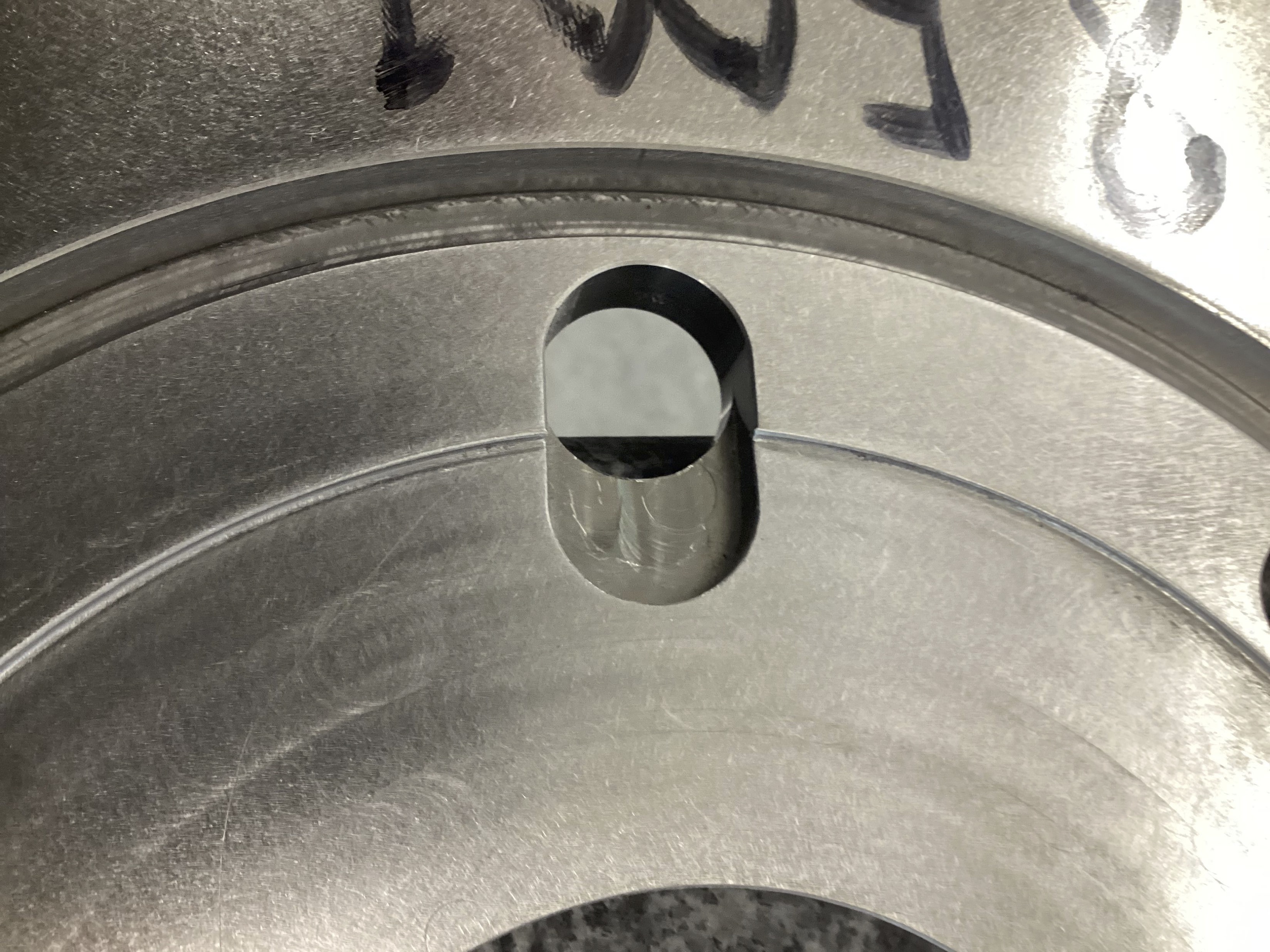Bore misalignment problem solving2024-12-20
The QC team inspected the motor plate, which was machined by the CNC milling machine center (see the photo below), and found a misalignment at the bottom of a bore.

Motor Plate Bore misalignment due to several possible causes
Our engineering and QC team have preliminarily determined several possible causes for this issue:
1.) Tool Path Error
Root cause: The CNC programming code might have an error in the tool path, could be due to incorrect coordinates, tool offset settings, or a miscalculation in the G-code.
Corrective action: To review the G-code is a must.
2.) Tooling Wear or Breakage
Root cause: The misaligned bore might be caused by worn out or broken cutting tools during the production.
Corrective action: The operation team should ensure the cutting tool is in good condition regularly.
3.) Machine Calibration
Root cause: CNC machine centers need to be properly calibrated regularly. Issues with the machine's axes alignment or spindle speed could cause such discrepancies.
Corrective action: To verify all axes are correctly aligned and the spindle is functioning properly.
4.) Material Issues
Root cause: The material might have moved or deformed unexpectedly during CNC machining, possibly due to improper clamping or residual stresses in the material.
Corrective action: Ensure the workpiece is clamped securely without any movement possibility. Also, look for any signs of deformation or stress in the material, annealing the material to relieve internal stresses.
5.) Human Error
Root cause: Incorrect setup by the operator, like wrong tool selection, improper cutting tool length offset, or setup of the workpiece.
Corrective action: Operator training to make sure the operator is well-trained and follows all procedures correctly.
This kind of defect is critical in CNC precision machining, as it can affect the functionality of the part assembly. This approach ensures that issues like bore misalignment or other machining errors are identified promptly. By implementing immediate quality improvements, we can prevent similar problems from occurring in the future, maintaining high standards of product quality and customer satisfaction.
